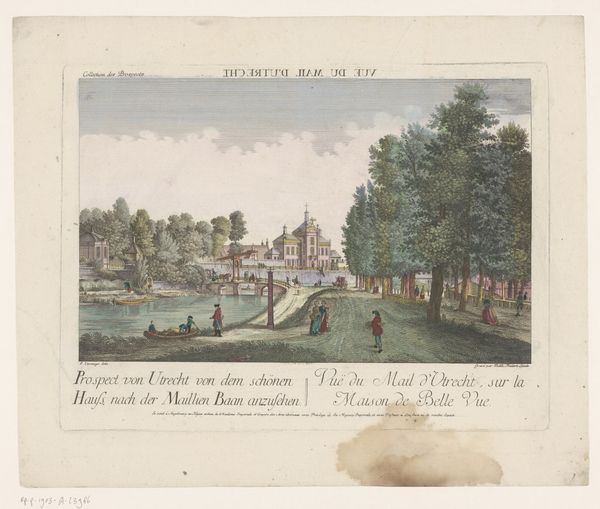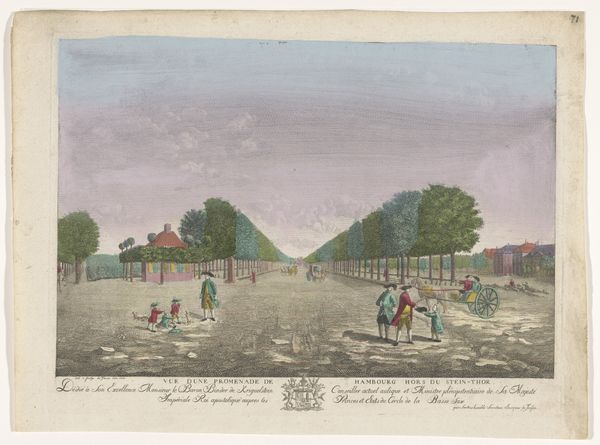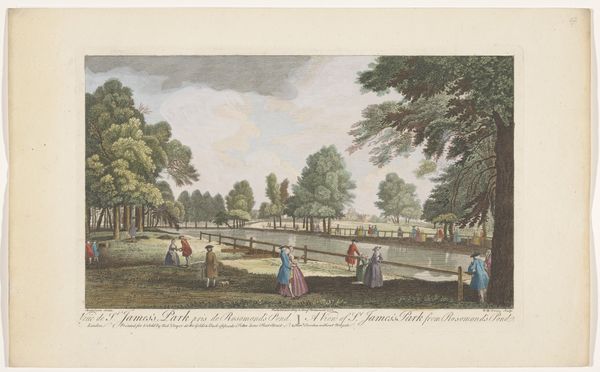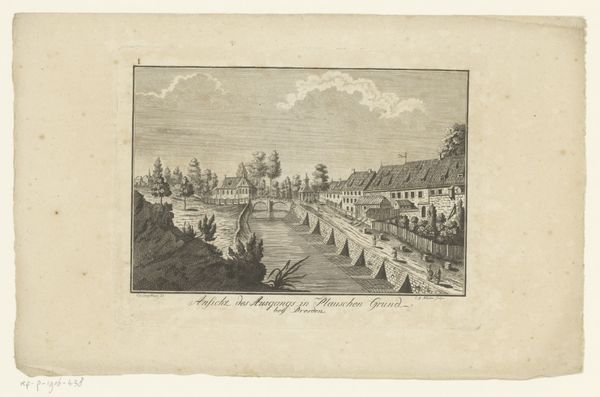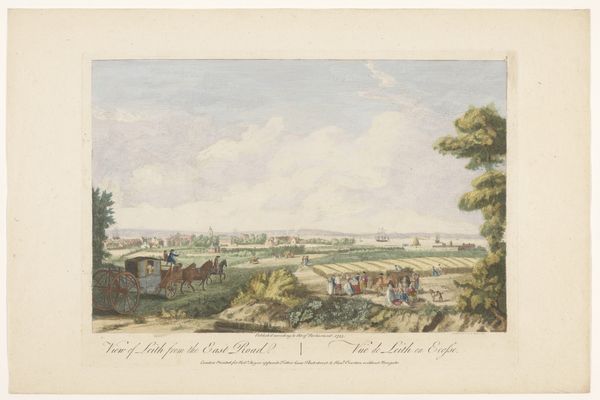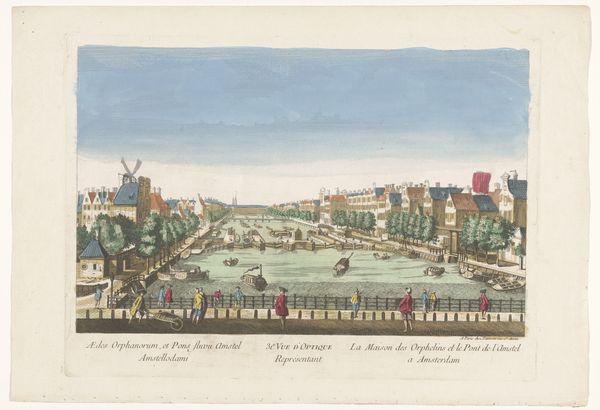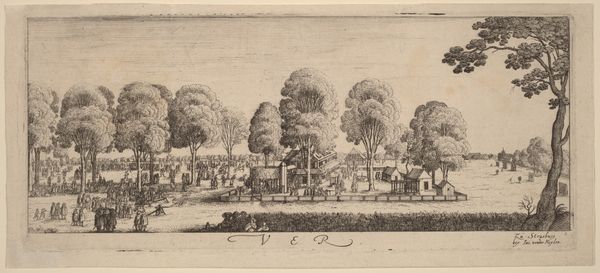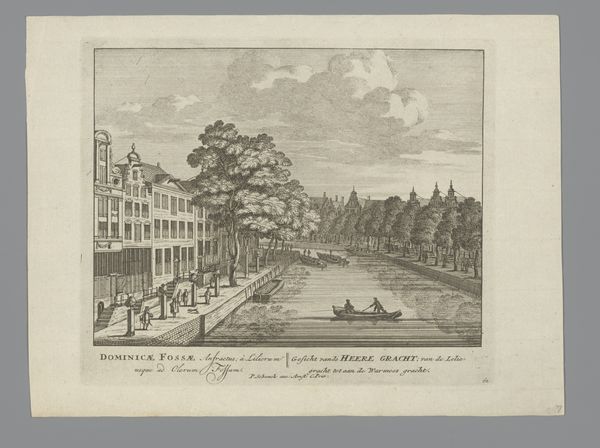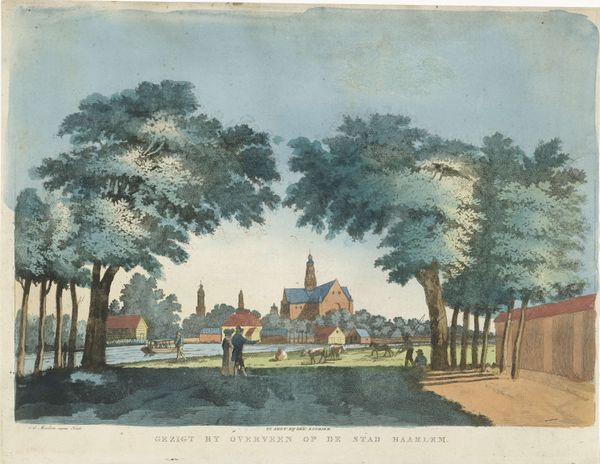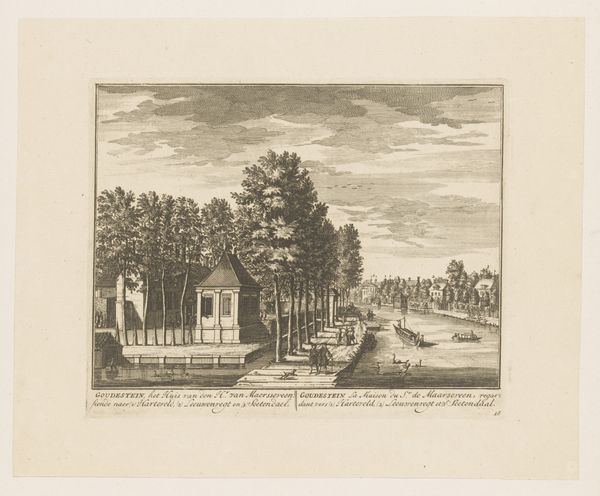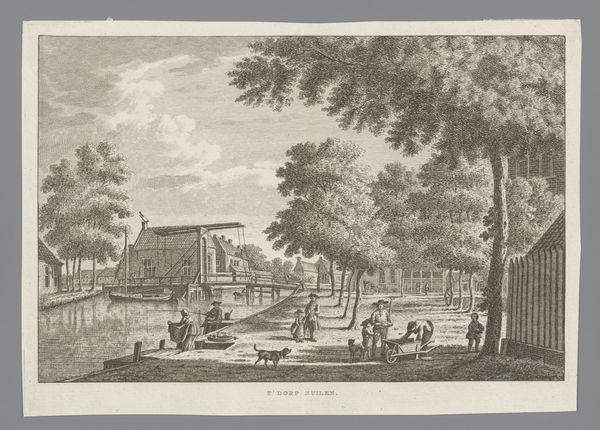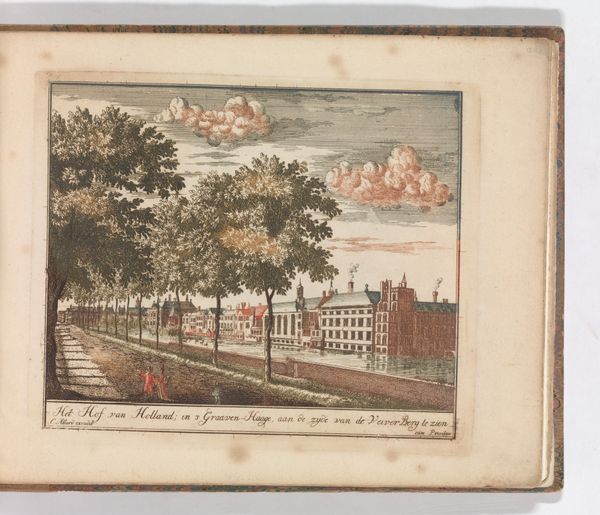
Gezicht op de stad Bremen gezien vanaf de westzijde 1755 - 1779
0:00
0:00
Dimensions: height 342 mm, width 464 mm
Copyright: Rijks Museum: Open Domain
Curator: Welcome! We're standing before "View of the City of Bremen from the West," a watercolor and colored pencil work created between 1755 and 1779. It’s currently held in the Rijksmuseum. Editor: The first thing that strikes me is the almost dreamlike quality of the colors. Everything is pastel, gentle, but also precise. There's a kind of staged feeling to the composition, a theatrical elegance. Curator: Precisely! Cityscapes like these served as more than just topographical records. The print offers us insights into the socio-political landscape. Note the prominent position of the well-dressed figures strolling along the avenue versus, say, the laborers near the riverbank. We see a careful articulation of social hierarchy. Editor: Yes, it's almost a performance of civility. Look at the detail given to the gazebo on the right, how it elevates leisure and the expectation of ordered social interactions. But do we risk romanticizing the past if we solely focus on the socio-political structures present within the scenery? Isn't there a certain quiet beauty too? Curator: Of course, art operates on many levels, but to divorce this imagery from the context in which it was produced is to miss an opportunity. Genre painting, which is evident here, often served a didactic purpose, reinforcing societal norms through visual representation. Notice the very structured alignment of trees along the Alle, it seems so ordered and tamed. Editor: Point taken. Thinking about the “prospect” – both as viewpoint and future possibility – embedded in the title... who exactly was meant to aspire towards what? Curator: A prosperous and civilized life sanctioned by the social structure, very clearly. The artist, deliberately or not, invites the viewer into a visual script defining privilege and place. It highlights a tension within Enlightenment ideals. The promise of advancement, but access remained drastically unequal. Editor: Well, considering that initial aesthetic response has now morphed into a deeper awareness of social commentary, I appreciate this piece even more. It holds far more weight than I first anticipated. Curator: It reminds us that artworks from any period exist in a dialogue with their historical and contemporary viewers, encouraging us to ask how imagery shaped perceptions then, and how we interpret those legacies today.
Comments
No comments
Be the first to comment and join the conversation on the ultimate creative platform.
